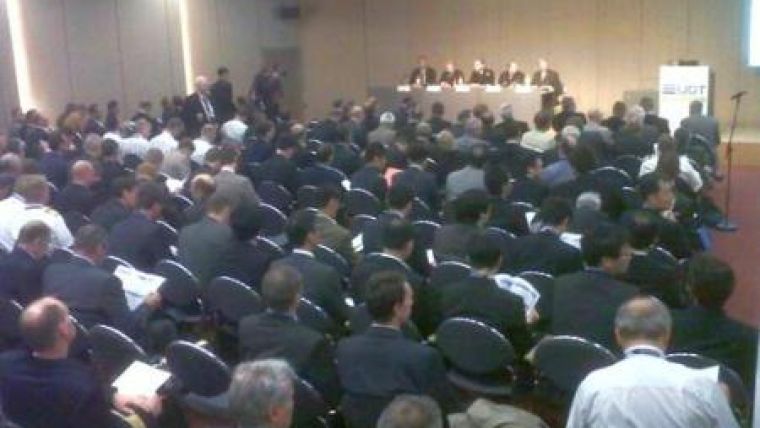UDT Breathes Innovation and Enterprise
It was a case of standing room only as UDT Conference Chairman Ernst-August Petsch opened the 2010 event at the CCH conference center in Hamburg on Tuesday 8th June. Capt Petsch said that after 20 years - and making its fourth visit to Hamburg - UDT was continuing to show that innovation and enterprise were very much alive in the undersea defence community.
The first keynote address was given by Vice Admiral Axel Schimpf, chief of staff, German Navy, who said that the world has changed fundamentally, with globalisation potentially having a significant impact on individual nations' security. He described the sea as ‘the bridge connecting our global world'. He said that while technology had an important role to play in meeting the new spectrum of threats - which included international terror, organised crime, piracy and weapons of mass destruction - there should not be over emphasis on this area, quoting an earlier German admiral who said ‘technique without leadership is purposeless'. Adm Schimpf said that the German Navy's vision for beyond 2025 was ‘Protect and project'.
Rear Admiral Mark Anderson, commander operations, Royal Navy, United Kingdom, said that the asymmetric undersea threat is very real and the days of the deep water anti-submarine operations had largely gone. Today's platforms were more advanced but fewer. Furthermore, the cost of producing and laying mines was a fraction of the cost of detecting and neutralising them. Adm Anderson described the submarine as a ‘sea denial weapon' to scare off the enemy, saying that ‘submarines need to be sinister'. In terms of priorities for these economically-challenged times, he said that ‘really good torpedo decoys are a must'. Also important were intelligence gathering - with near real-time reporting - and anti-submarine capability.
The need to meet largely unknown future challenges while making every Kroner count was a theme of the presentation by Rear Admiral Andreas Olsson, Director, Naval and Marine Procurement Command FMV, Sweden. He said that an alternative to buying new platforms incorporating all the latest technology was submarines that had significant potential for upgrades over a considerable period of years. He too commented on the increasing need to meet asymmetrical threats, stating that in the future the enemy might not be as well trained or organised as traditional opponents but this did not lessen the risk they posed.
Dr Paul Narum, Director General of FFI, the Norwegian Defence Research Establishment, described the range of undersea defence programmes which the institution is researching. Focusing on the subject of network centric warfare, he said that the majority of people associate this with land and air, but FFI was working on a highly affordable capability for undersea applications.
The UDT 2010 conference continues until today.














